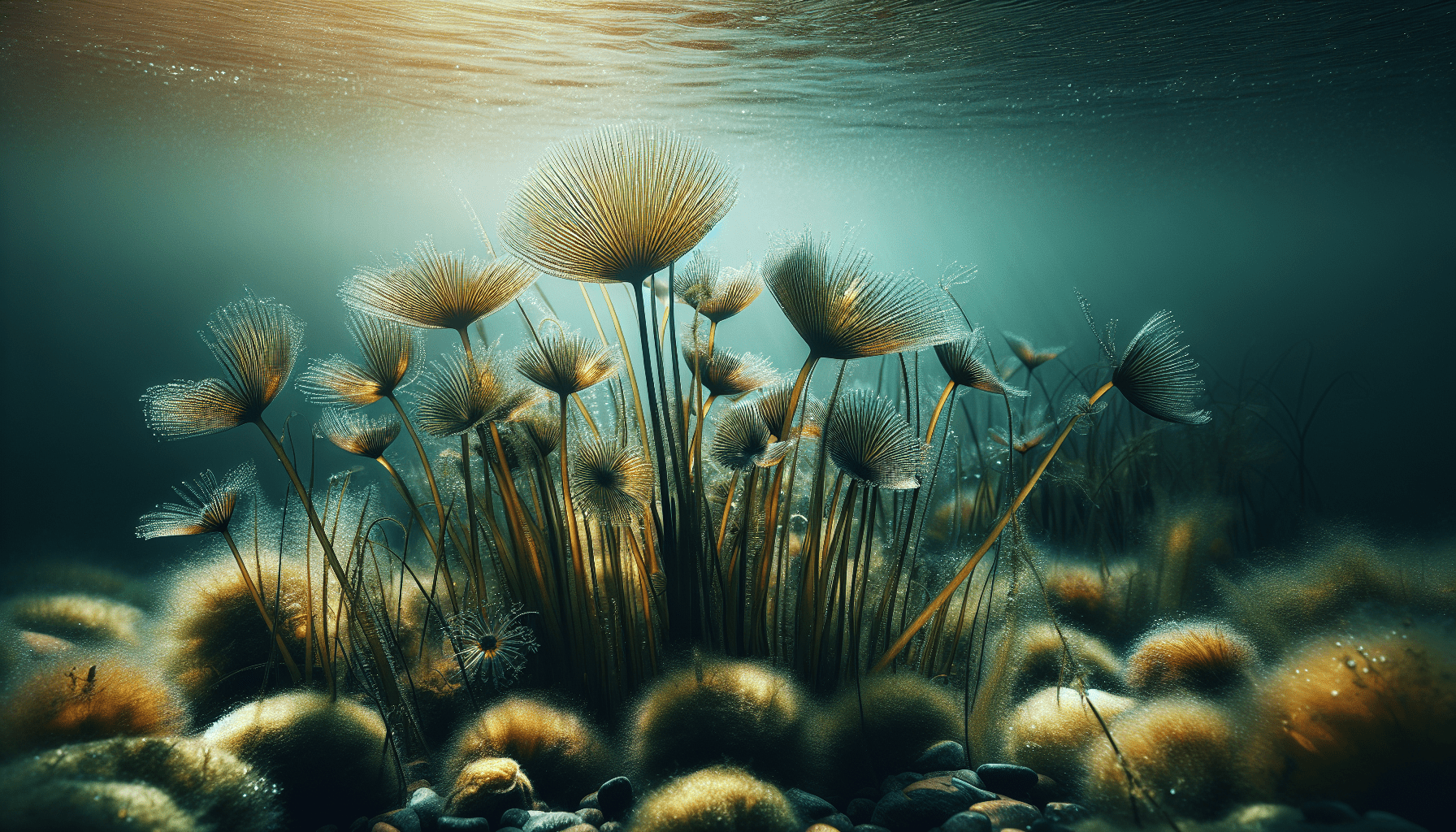Acquainting yourself with the aquatic weed called Eleocharis vivipara permits you to unearth a fascinating world submerged in water. This article primarily discusses Eleocharis vivipara, a prevalent and compelling aquatic plant. Within the bounds of this discussion, your understanding of its essential biological elements, unique propagation methods, ecological significance, and the immense potential it encompasses for use in aquatic landscapes will be considerably heightened. Exploring this aquatic weed’s world will offer you a fresh perspective on the fundamental roles and diverse potentialities of such water dwellers.

Taxonomy and Classification of Eleocharis Vivipara
The understanding of an organism rests primarily on its taxonomic categorization. Eleocharis vivipara is a species of the genus Eleocharis, which counts over 200 distinct species within its fold. The terminology, Eleocharis, is derived from the Greek words ‘helos’ meaning marsh and ‘charis’ meaning grace, a fitting descriptor for many species of this genus which are aquatic or semiaquatic.
Genus and species explanation
The genus Eleocharis is characterized by its grass-like appearance and flood-tolerant nature making it an essential component of wetland ecosystems. Eleocharis vivipara or viviparous spike-rush, as it is commonly known, is distinguished from other members of its genus by its unique ability to produce bulbils at the terminal ends of its culms or stems. These bulbils are plantlets that give this species its name, ‘vivipara’, which means live-bearer.
Family and order description
Eleocharis vivipara belongs to the family Cyperaceae or sedge family, one of the most diverse families of flowering plants with over 5000 distinct species. They are typically found in wetlands and their adaptation to this niche is a characteristic of the order to which they belong – Poales, an order recognized for its predominance in various wetland habitats.
Closely related species and differences
Closely related species include Eleocharis palustris and Eleocharis acicularis. While they share the Eleocharis genus and a preference for aquatic or semiaquatic habitats, they differ in substantial ways. Unlike E. vivipara, E. palustris is not viviparous and has more rigid, erect stems. E. acicularis, also known as needle spike-rush, stands apart with its distinctly thin, needle-like appearance.
General Descriptions and Physical Features
Every species has unique characteristics that equip it for survival in its preferred habitat. Eleocharis vivipara similarly possesses an array of interesting features.
Stems and leaves characteristics
This species has thin, hair-like stems that reach a length of up to 60 cm, carrying a single terminal spikelet. One could easily mistake their stems (culms) for leaves as they do not have obvious leaves. The leaf sheaths are situated at the base of the plant and are typically pale brown.
Root system and reproduction organs
Roots of Eleocharis vivipara play a crucial role in anchoring the plant to the submerged ground. The reproductive organs are the spikelets, each of which bears numerous flowers (florets) encapsulating the seeds or bulbils. The plant’s viviparity is its distinguishing feature – the ability to produce plantlets directly from these spikelets.
Size and color variations
This species displays a variety of sizes based upon its growing conditions but generally adheres to a pattern of slender, elongated growth. Its color ranges from vibrant green to deep brown depending on the life cycle stage and environmental factors.
Distribution and Habitat
For Eleocharis vivipara, the preferred territories span several geographical regions and environments.
Geographical regions where it is found
This species demonstrates a cosmopolitan distribution, appearing in tropical and subtropical regions of Asia, Africa, America, and Australia.
Preferred water conditions and depth
It thrives in freshwater bodies such as marshes, ponds, and lakes. Its flood-tolerant nature allows it to endure varying water depths, although it generally prefers shallow regions where it can readily access sunlight.
Sensitivity to pollutants and climatic changes
Like all aquatic plants, Eleocharis vivipara is sensitive to water pollution and water quality changes. Higher concentrations of pollutants can potentially disrupt its growth. It is also responsive to climatic shifts, with a preference for warmer climates, commonly found in the fringes and shallows of tropical and subtropical bodies of water.

Life Cycle and Growth Patterns
Understanding the life stages and growth pattern of a plant species is crucial in managing its cultivation and proliferation.
Stages of lifecycle
The life cycle of Eleocharis vivipara encompasses stages from seed germination, growth and adult maturity to the unique viviparous reproduction and senescence. The viviparous plantlets grow directly from the parent plant until they detach and establish themselves independently.
Seasonal growth patterns
Its growth patterns, especially the formation of new plantlets, are modulated by light and temperature changes across seasons. Increased growth is observed during the warmer, brighter months.
Factors affecting growth speed and lifespan
Its growth and lifespan are impacted by various environmental and nutritional factors. Pollution, water depth, light availability, temperature and nutrient access play significant roles in determining its vigor and longevity.
Reproduction and Propagation Methods
Eleocharis vivipara employs a dual method of propagation involving sexual and asexual reproduction.
Flowering and fruiting process
The flowers of this species are small and inconspicuous, nestled within the spikelets borne at the culms’ tips. The fruiting bodies produce seeds (achenes), potentially leading to a new plant generation.
Seed dispersion and germination
The seeds, following their release, sink into the muddy bottom of the water body. They germinate under the right conditions of light, temperature, and nutrition to initiate a new plant’s growth.
Vegetative reproduction and cloning
Simultaneously, Eleocharis vivipara propagates asexually through the formation of plantlets in its spikelets. These plantlets, when mature, detach from the parent plant and root into the substrate, effectively cloning the original plant.
Nutritional Requirements and Metabolism
The plant’s requirements for surviving, thriving, and propagating are best understood through its nutritional necessities and metabolic processes.
Basic nutritional requirements
Like most plants, Eleocharis vivipara requires macronutrients such as nitrogen, phosphorus, and potassium, along with an assortment of micronutrients acquired from the surrounding water and sediment.
Photosynthesis process
Being an autotroph, it harnesses sunlight through the process of photosynthesis, converting light energy into chemical energy stored in carbohydrate molecules, thereby optimizing its growth possibility.
Role of pH and minerals
The pH level of the water noticeably influences the plant’s ability to absorb available nutrients. Minerals, being the building blocks of its structure and vital metabolic processes, are also crucial to its health and growth.
Ecological Role and Interactions
The existence and survival of Eleocharis vivipara holds ecological significance due to its interactions and impact within the aquatic ecosystem.
Role in the aquatic ecosystem
Within its ecosystem, this species plays a valuable role by stabilizing the substrate, moderating water flow, facilitating sedimentation, and providing both habitat and food for various organisms.
Interactions with other species
Depending upon the context, it interacts beneficially with some organisms, offering shelter and sustenance, while competing for resources with other plant species.
Impact on water quality and clarity
By filtering water and depositing sediment, Eleocharis vivipara contributes to improving water quality and clarity in its habitat, thereby fostering biodiversity.
Potential Uses and Benefits
Apart from its ecological role, Eleocharis vivipara has a variety of potential uses and benefits to humans and other organisms.
Uses in aquariums and decorative ponds
Its delicate, hair-like vegetation and unique viviparous reproduction make it an aesthetic and interesting addition to aquariums and decorative ponds.
Benefits to the aquatic life and environment
It provides food and shelter for a variety of aquatic organisms and birds, supporting biodiversity, and sequesters carbon, contributing to climate change mitigation.
Potential medicinal and nutritional uses
In some regions, the young shoots of Eleocharis vivipara are harvested as a vegetable. While it has so far not been widely explored for medicinal uses, numerous plants from the sedge family possess medicinal value, suggesting potential applications in the field.
Challenges and Control Measures
Harvesting the benefits of this species requires understanding and managing the challenges it presents.
Challenges in cultivation and control
Potential challenges include managing its rapid growth and potential to crowd out other species. Hardware cloth and other physical barriers can assist in containment.
Common diseases and pests
While it is generally resistant to diseases and pests, it can be vulnerable to fungal infections under certain conditions. Aquatic insects and certain bird species may also feed on the plant.
Methods for control and eradication
Possessing a rapid growth rate and efficient propagation method, the eradication of Eleocharis vivipara can be challenging. Manual extraction and the use of herbicides are control methods, although they must be employed carefully because of potential ecological impacts.
Research and Conservation
Given its ecological and potential economic value, research and conservation efforts on this species have importance.
Current research studies
Present research is focused on understanding the life strategies and propagation methods of Eleocharis vivipara, its ecological role and potential economic uses.
Conservation status and protective measures
While this species is not currently listed as threatened globally, local depletion may occur due to habitat loss. Protective measures should correspondingly center on restoring and preserving its habitats.
Potential threats and mitigation strategies
Habitat degradation, water pollution, and climate change are potential threats to Eleocharis vivipara. Mitigation strategies include habitat conservation, aquatic ecosystem preservation, and pollution control measures.
In conclusion, Eleocharis vivipara’s fascinating viviparity, ecological role, and potential economic benefits make it an intriguing subject for further research and conservation efforts. As with any species, its management requires a careful balance between harvesting its benefits and mitigating potential harms. This balance is indeed the heart of biodiversity conservation.